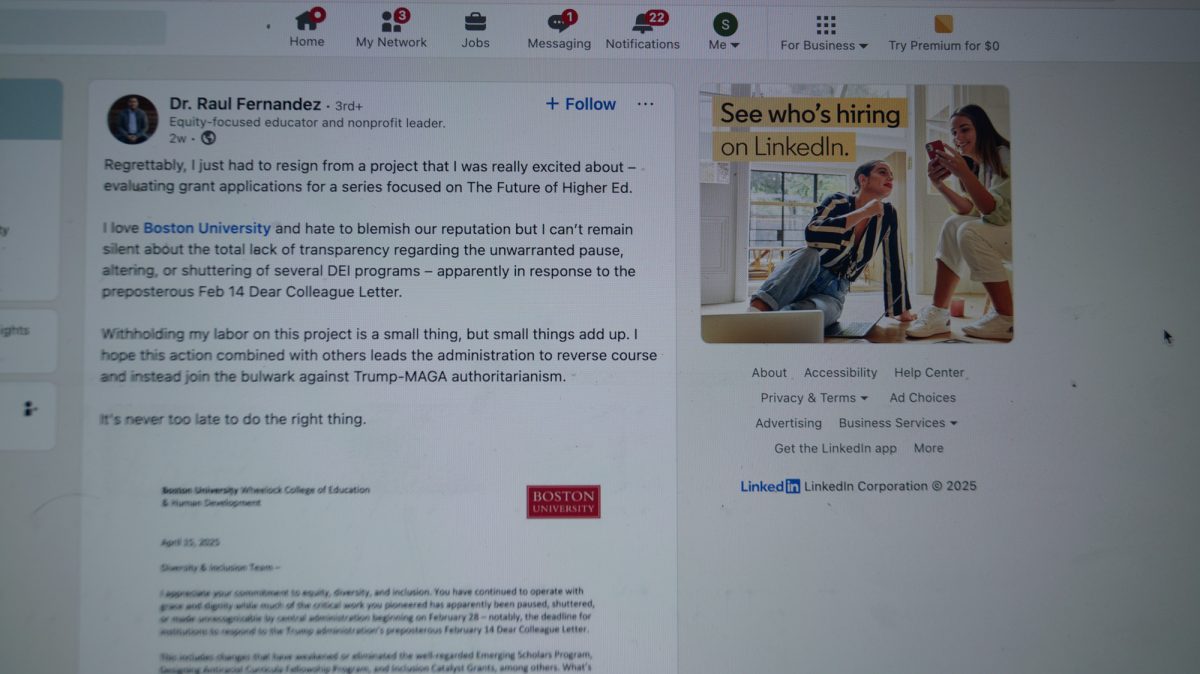Boston University adjunct professor Osamu Shimomura said he has touched, dissected and examined more than 850,000 jellyfish in his lifetime.
‘If I’m studying one subject, I have to finish that subject,’ he said. ‘I studied jellyfish a long time. We gathered many jellyfish.’
Shimomura, 80, collected jellyfish to explore their luminescent nature. His first summer working on the project, in 1961, Shimomura said he gathered luminescence from 10,000 jellyfish.
Though messy and frustrating at times, Shimomura said his patience paid off in the end. Shimomura won the 2008 Nobel Prize in Chemistry for his discovery of the green fluorescent protein within jellyfish, a tool now used extensively in biomedical research for observing microscopic processes.
‘I had no idea that this would be its use and application,’ he said. ‘I wanted to know why it was fluorescent. That’s all.’
Columbia University biological sciences professor Martin Chalfie later attached the protein to a transparent roundworm to illuminate cell activity. University of California, San Diego pharmacology professor Roger Tsien then mutated the protein into different colors. Chalfie and Tsien also received the award.’ ‘
Shimomura, who retired as adjunct professor in 2000 after 20 years, said he encountered research difficulties ‘almost every day.’ At the start of his research, he had thought the cause of fluorescence came from an enzyme, not a protein.
‘The idea was wrong,’ he said. ‘We started to try to extract anything. That took a long, long time, a lot of thinking. To solve the problem, we had to ignore pre-existing theory.’
Shimomura did not successfully extract GFP until a year later, and it was not until 1979 that Shimomura said he stopped working on the protein. However, Shimomura said he does not charge other scientists for access to his hard work because he does not own the patent and simply does not want to charge money.
‘I have no interest in getting money,’ he said. ‘My interest is just in helping people.’
BU physiology and biophysics professor Jim Head said this humility is typical of Shimomura’s personality.
‘He was the person who could provide the proteins,’ he said. ‘People around the world are interested in the field, and he would provide that free of charge to all these people in the world.’
Head said he worked with Shimomura during the 90s, solving the structure of another protein Shimomura discovered at the same time he discovered GFP.
I think one of the most impressive features about Shimomura is that he would put in tremendous amount of work to extract these small amount of proteins,’ he said. ‘He’s a very dedicated individual.’
BU Medical Campus Provost Karen Antman said GFP is an ‘immense tool’ used in biological research.
‘His discovery has obviously made an enormous impact on science,’ she said. ‘You can hook it onto other proteins, see where it goes and modify the genetics. It allows you to follow normal and abnormal development in a live animal, because you can just shine a light on it.’
BU physiology and biophysics chairman David Atkinson said GFP is helpful toward researching degenerative diseases, such as Alzheimer’s disease, and BU researchers use the protein constantly.
‘It’s revolutionized how we are able to visualize events that are happening inside cells,’ he said. ‘All of the department, without doubt, feels Dr. Shimomura has received the recognition that is well deserved.’
Categories:
Patience led to top honor
By Daily Free Press Admin
•
October 10, 2008
1
0
More to Discover














































































































Cirvalina Longboy • Aug 3, 2010 at 2:20 pm
This is great! My congratulations to the persevering chemist , Dr.Osamu Shimomura.<p/>In 1963, my under graduate thesis (Bachelor of Science in Chemical Engineering, Mapua Institute of Technology, 1963) was about extracting protein from green algae. Someone “struck it rich” by publishing a more intensive research on this topic. There are lots of sources of food protein, there’s no reason why there’s starvation in America.